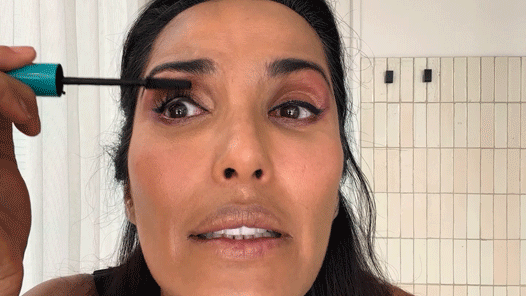From nearly-natural looks to full-tilt glam, mascara can completely change your look. A single root-to-tip swipe (or maybe three if that’s your vibe) is like magic in a tube: It enhances the lash line, and provides volume, length, and drama to lashes. But when it comes to formulations, all mascaras are not created equal—which is why need to talk about tubing mascara.
Though the option been around since the mid-1990s, tubing mascara is experience something of a renaissance as of late. “So what is tubing mascara?” the uninitiated may ask. The answer is a favorite option of makeup artists and aficionados the world over. “Tubing mascara creates tiny tubes around every lash,” says makeup artist Fara Homidi. Though the description may sound simple, the technology is a touch more complicated. Unlike traditional mascara, which coats lashes in an oil-based pigment and is similar to painting lashes, tubing mascara relies on polymers to wrap individual lash hair in their own little encasement, creating a baby extension effect on each lash. The result is a long-wear option that offers major separation, minus the unwanted smudging.
“What I love the most about tubing mascara is the non-transfer feature of the formula,” says makeup artist Jamie Greenberg. The lack of flakes and smudges is down to the absence of oil, which tends to cause the pigment in traditional mascara to run. “For those prone to ‘raccoon eyes,’ a tubing mascara will be your best bet to remedy the issue.”
The unique formula comes with its own characteristics that make applying and removing tubing mascara a slightly different undertaking than the process you’re likely used to. “Tubing mascara tends to be wetter when applying, so I recommend cleaning the excess mascara off of the wand before applying, and working in layers to get the separation and lift you may be more used to getting with traditional mascaras,” says Homidi. For her part, Greenberg suggests applying thinner coats of tubing mascara to retain control over lash separation and the final look. “To get that extra curl and hold, I use an eyelash curler before the first coat and again after the second,” she adds.
And when it comes time to clean your proverbial canvas, ditch the makeup remover in favor of warm water and an open mind. “Most tubing mascara’s wash off instantly with water—no tugging or pulling to clean the eyes,” says Homidi. She notes that spidery black strings (Greenberg describes them as beads) will come off lashes as you cleanse, which is completely normal, if slightly bizarre at first rinse. And tubing mascara removes so easily with water, be sure to invest in a water-resistant formula should swimming, inclement weather, or tears be in the cards.



